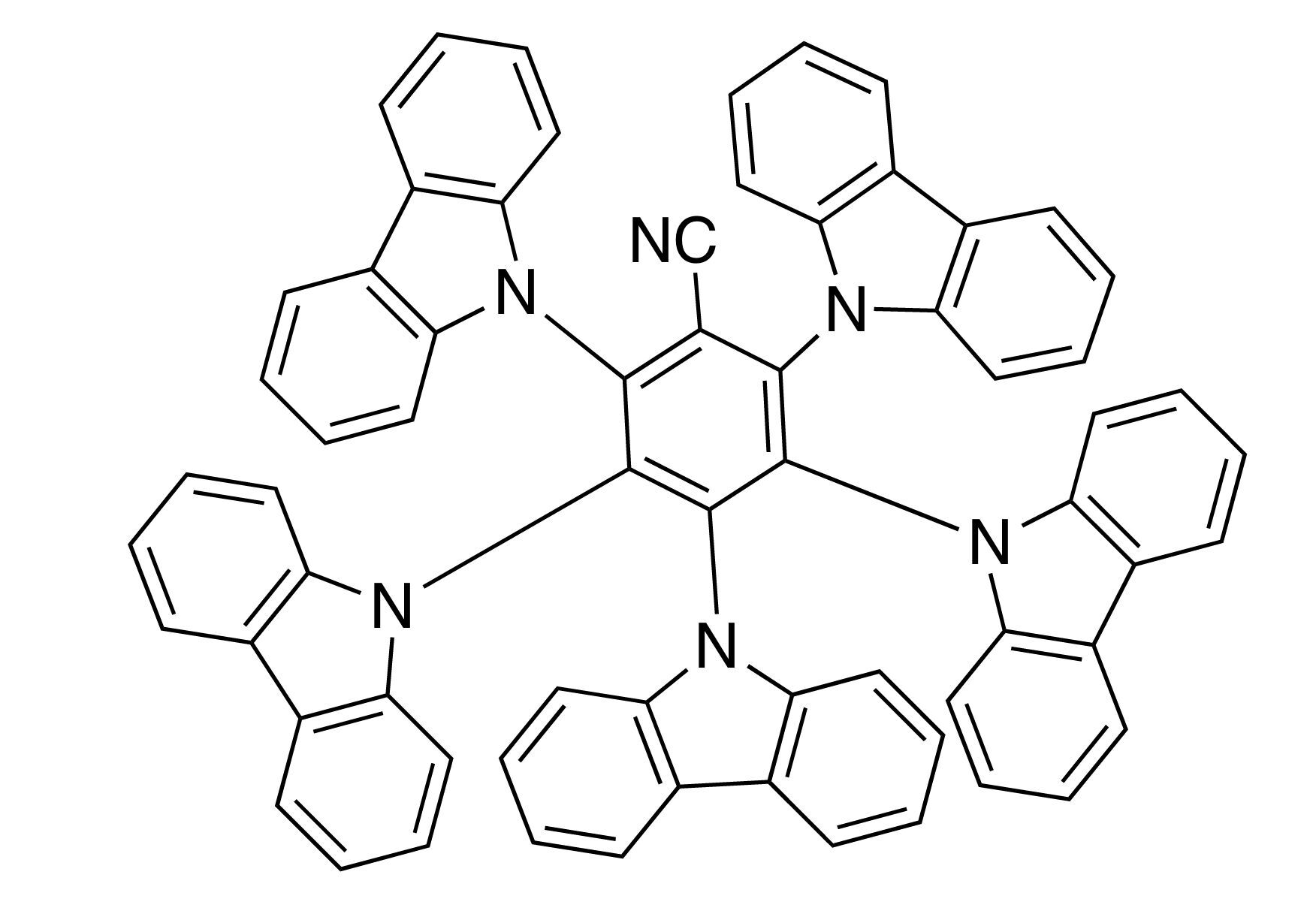5CzBN
Safety Information
Hazard Statements
Precautionary Statements
Pictograms
Product Description
5CzBN, or 2,3,4,5,6-Penta(9H-carbazol-9-yl)benzonitrile, is a highly conjugated organic compound featuring a central benzonitrile core surrounded by five carbazole moieties. This structure not only enhances its electronic properties but also contributes to its thermal stability and solubility in common organic solvents. The presence of multiple carbazole units increases the molecule's ability to participate in charge transfer processes, making it potentially useful in optoelectronic devices such as organic light-emitting diodes (OLEDs) and photovoltaic cells. Moreover, its chemical robustness and the ease of functionalization at the nitrile group offer opportunities for tailoring its properties to suit specific applications in materials science and electronics.
Application
The primary application of 5CzBN is in the design and synthesis of materials for optoelectronic devices, leveraging its excellent electron transport and hole blocking properties. Its use in OLEDs can enhance device performance through improved charge balance and reduced recombination. Additionally, its potential for energy conversion in photovoltaic cells is significant, given its ability to absorb and emit light efficiently. Beyond these applications, the compound's unique electronic structure and chemical stability make it an interesting candidate for exploration in other areas of materials science, such as sensors and actuators, where its responsiveness to external stimuli could be utilized.
Articles:
- An Alternative Host Material for Long-Lifespan Blue Organic Light-Emitting Diodes Using Thermally Activated Delayed Fluorescence
Publication Date: 23 March 2017
Soo-Ghang Ihn, Namheon Lee, Soon Ok Jeon, Myungsun Sim, Hosuk Kang, Yongsik Jung, Dal Ho Huh, Young Mok Son, Sae Youn Lee, Masaki Numata, Hiroshi Miyazaki, Rafael Gómez-Bombarelli, Jorge Aguilera-Iparraguirre, Timothy Hirzel, Alán Aspuru-Guzik, Sunghan Kim, Sangyoon Lee
https://doi.org/10.1002/advs.201600502
- A perspective on blue TADF materials based on carbazole-benzonitrile derivatives for efficient and stable OLEDs
Publication Date: MARCH 25 2020
Chen Yin, Dongdong Zhang, Lian Duan
https://doi.org/10.1063/1.5143501
- CN-Modified Host Materials for Improved Efficiency and Lifetime in Blue Phosphorescent and Thermally Activated Delayed Fluorescent Organic Light-Emitting Diodes
Publication Date: March 31, 2017
Sung Yong Byeon, Ji Han Kim, Jun Yeob Lee
